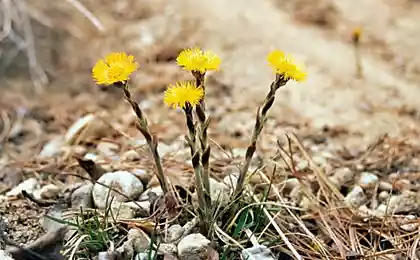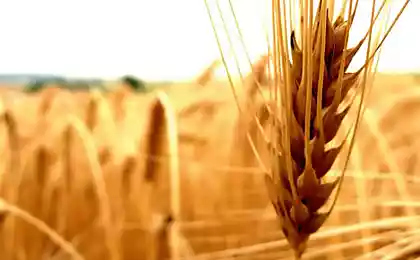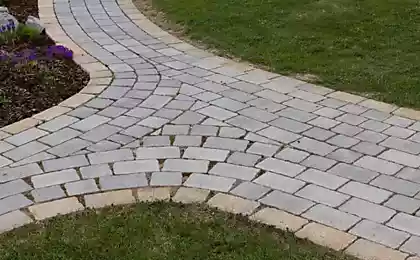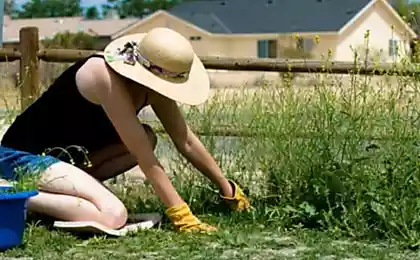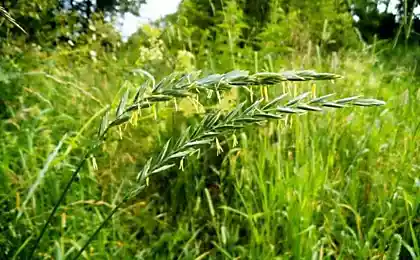619
9 effective ways to fight weeds
The word "weed" to most vacationers are familiar to the pain (in lower back, tired of endless weeding). And of course, I want to get rid of these "foes" forever. And preferably without extra work)) well, let's look for ways...
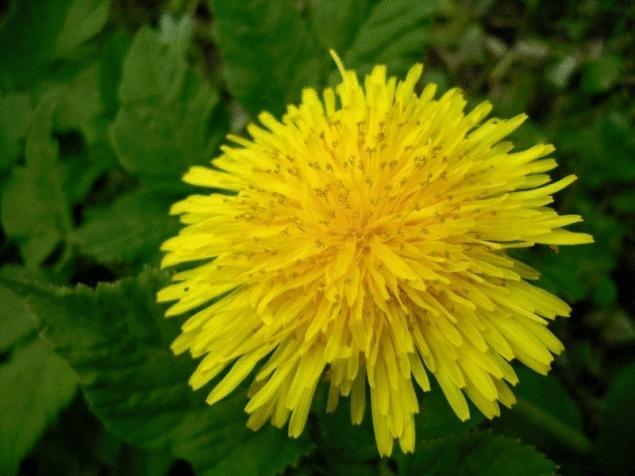
I must say: my list does not pretend to be exhaustive. Moreover, the collected methods of weed control are very different — among them are "lazy" and there are those that will require effort. Some of the ways a lot of opponents. But my deepest conviction: to choose, you need to know. You can not blindly rely on the opinions and input from others should be sought and to find what suits you and what you have works best.
So I invite you to discuss: share your experiences confirm or refute the validity of the described methods and techniques complement and extend my list! Method 1 — traditional With what soil you need to dig, today, many argue. We will not argue — not about that now speech not about methods of cultivation. And to deal with perennial rhizomatous weeds, digging and plowing remain one of the most effective methods.
Yes, this is a rather laborious process, and it has its drawbacks. But, let's say I have a site, which two years ago grew nothing but wheat grass, nettle and goutweed. As no digging is quick to seize their land if the entire top layer consists entirely of the same roots? I have not yet found the answer to this question. So dig, carefully choosing the roots manually.
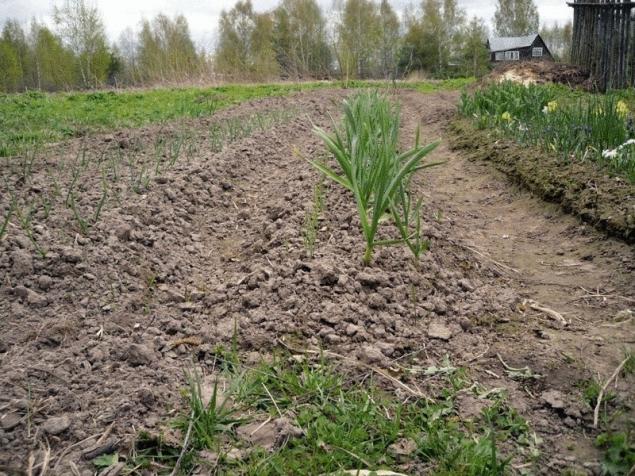
There are different options. For example, to dig with a shovel, and a pitchfork — so much less chance of damage to the rhizome, cut it into pieces, which then grow new weeds.
You can plow the virgin soil with the cultivator, walking tractor or tractor (if any). In this case, to choose the roots will be more complicated, but, in my experience: this treatment helps in just a year or two to get rid of wormwood, thistles and similar plants with a very strong and deep root system with a shovel to uproot namuchaetes. Method 2 — chemical This method I don't like and never used. But maybe for some situations it is the only way out, although in the garden I would not recommend to use it under any circumstances — poison, which are herbicides, it is poison. In addition, at some plants (such as Hogweed Sosnowski) these drugs do not act.

They say, however, that there is a new generation herbicide — Errokiller, able to destroy even such "monsters". But I always wonder: what will happen to soil, which gets the drug? with insects or other living creatures that may accidentally stumble upon the treated plant?.. Method 3 — the biological order to live and grow, plants (and cultural, and weeds) need light. In the dark slow down or even stop metabolic processes in plant tissues. Over time this can destroy not only the shoots and root system, which does not receive the necessary nutrition.
Covering the soil in any dense opaque material (black tape or mulch agrotextile; paperboard; felt paper; Board and so on), we deprive the weeds necessary for life conditions, and they die. However, have patience: one of the season for this sometimes is not enough. Besides, on the surface of such shelters (especially nonwoven) gradually accumulated a layer of earth into which the seeds fall and start over.
If the method you are interested in, see how it might look so in the video the author shows the results of a year-long use of black mulching films and describes in detail the technology used:
However, the choice of materials for mulching of the soil should be treated very carefully. Thus, under a black wrap may overheat the soil; the roofing material is able to isolate the resin, which safety a big question, and so on. These nuances are important to understand and consider.
A good alternative to synthetic cover, organic mulch. Only to pour her need a thick layer (5-10 cm minimum). The fit and sawdust, and grass cuttings, and tree bark — about the different types of mulch we have said, and you can read more about its use in articles appropriate types of mulch for the garden and 6 popular options autumn mulch for every taste. And in the following video you will see how you can combine materials: in this case, the cardboard plus wood bark.
Method 4 — the substitute Where there are weeds? Right — where there is a free vacant land. On the ground, busy planting, weeds are usually small, and it is often annuals that deal a lot easier. What conclusion should we reach? The empty space should be.
Part of the problem is solved by the mulch, which was mentioned just above. But there are other options. Example: free the patch after early greens or harvesting onions — sown green manures or her conduct the second of the summer crops growing of vegetables.

Dense planting is also a solution. Of course, to condense, need to mind that the plants were not crowded, and the crop did not suffer. But with the right approach it is possible and beautiful to the garden, from weeds to get rid of — they just have nowhere to grow Method 5 — this method of alcohol the birthplace of America, where it was first tested in the 30-ies of the last century. Its essence is extremely simple: about a month before sowing the soil is treated with 6% solution of ethyl alcohol (in our case it is 150 g plain vodka in a bucket of water). Alcohol stimulates the germination of seeds and weeds germinate together, after which they gently weed out. Argue that the effect of this treatment remains not even one season! Don't know, I have not tried)) Maybe someone checked? Tell us about the experience!
Method 6 — fire
Another exotic way — domestic invention. Many have noticed that in the beds, where planted lugovskoye culture (parsley, carrots or dill, for example), weeds appear much earlier than germinate cultural crops. Our gardeners figured out how to quickly destroy these germs: take a blowtorch and pass along the beds, treating her sliding flame. The most important thing here is not to stay in one place, otherwise you can burn everything, including seeded vegetables. After treatment the soil needs to cool watering it with water. I have a blowtorch to use not able, therefore, to test in practice the way I plan to... Method 7 — exhausting the plant, as we know, the root system and aerial part are interdependent: if damage to one can and the other to suffer. So, if we carefully cut at the surface of the soil all the leaves and shoots to grow new plant will be forced to spend stamina and nutrients from their roots. What happens if this procedure we will carry out regularly? Most likely, there will come a time when stocks just runs out and the plant will die.
Agree, sounds very convincing. For many weed species, this method is effective. But not for all — that must also be understood. However, the universal method of weed control is probably not there. Meanwhile, such processing takes much less time and effort than digging, and therefore deserves attention.
According to my observations, entirely of lime weeds "shaving" will not succeed — the place of those who can not execution, just taking a more hardy species. But if in between the rows or under the trees in the garden you're happy with the turf — this method is suitable, perhaps, better than others.

Me in an old cottage by this method succeeded in reducing the number of goutweed. Regularly terminated its shoots manually (use the tool it was not possible — weed lived in the thickets of viburnum) and used the ripped grass as mulch. Perhaps another two years — and the ground would be over)) But I left, and the experiment was interrupted. But the Hogweed has already been mentioned in this article, a similar method to fight is useless — it keeps growing back even after repeated mowing.
For those species that Deplete the mowing can be the most important thing is not to hurt the roots. Therefore, it is desirable to use the plane or the hammer — hoe (hoe) there will be less convenient. Method 8 — prevention is Often the weeds in the beds we sow himself. This happens if you use fresh manure (it very often contains many seeds of the worst weeds). This happens if you lay in the Mature compost grass seeds and apply then not really ripe fertilizer. In the right compost heap temperature is usually high, and had seeds in it "burn out", lose their germination. But on the surface and edges of the raw material can be heated enough.
The way out is to avoid anything that can pose a challenge. Only use rotted manure; the correct form compost and time to mow the grass, not allowing her to tie seeds. Method 9 — psychological Finally — partly in jest, but partly seriously — one little tip. Many have heard, perhaps, the popular phrase: "you can Not change the situation — change your attitude to it." That weed about the same. No, I am not calling to put up with "jungle" in the garden. But I think, in the struggle for the purity of the garden we are sometimes too fond of, trying to achieve the ideal. And if you allow yourself and your country some imperfections, stop obsessing about the fact that "over there by the fence again, the grass got", you can save a lot of effort and nerves))
For example, I have a friend that can't live the weeds between the rows and sides of the beds. She spends a lot of time and effort to get rid of them — and they grow again and again... what else — nature abhors a vacuum... This confrontation seems to never end, after getting rid of the grass completely still fail. And whether such persistence is the result of the spent forces and nerves? I'm not sure...

By the way, many of the weeds (which are often "politically correct" styled decorously) possess very valuable properties — they can be used for pest control of garden and vegetable garden, used as medicinal raw materials and even food.
Source: www.7dach.ru

I must say: my list does not pretend to be exhaustive. Moreover, the collected methods of weed control are very different — among them are "lazy" and there are those that will require effort. Some of the ways a lot of opponents. But my deepest conviction: to choose, you need to know. You can not blindly rely on the opinions and input from others should be sought and to find what suits you and what you have works best.
So I invite you to discuss: share your experiences confirm or refute the validity of the described methods and techniques complement and extend my list! Method 1 — traditional With what soil you need to dig, today, many argue. We will not argue — not about that now speech not about methods of cultivation. And to deal with perennial rhizomatous weeds, digging and plowing remain one of the most effective methods.
Yes, this is a rather laborious process, and it has its drawbacks. But, let's say I have a site, which two years ago grew nothing but wheat grass, nettle and goutweed. As no digging is quick to seize their land if the entire top layer consists entirely of the same roots? I have not yet found the answer to this question. So dig, carefully choosing the roots manually.

There are different options. For example, to dig with a shovel, and a pitchfork — so much less chance of damage to the rhizome, cut it into pieces, which then grow new weeds.
You can plow the virgin soil with the cultivator, walking tractor or tractor (if any). In this case, to choose the roots will be more complicated, but, in my experience: this treatment helps in just a year or two to get rid of wormwood, thistles and similar plants with a very strong and deep root system with a shovel to uproot namuchaetes. Method 2 — chemical This method I don't like and never used. But maybe for some situations it is the only way out, although in the garden I would not recommend to use it under any circumstances — poison, which are herbicides, it is poison. In addition, at some plants (such as Hogweed Sosnowski) these drugs do not act.

They say, however, that there is a new generation herbicide — Errokiller, able to destroy even such "monsters". But I always wonder: what will happen to soil, which gets the drug? with insects or other living creatures that may accidentally stumble upon the treated plant?.. Method 3 — the biological order to live and grow, plants (and cultural, and weeds) need light. In the dark slow down or even stop metabolic processes in plant tissues. Over time this can destroy not only the shoots and root system, which does not receive the necessary nutrition.
Covering the soil in any dense opaque material (black tape or mulch agrotextile; paperboard; felt paper; Board and so on), we deprive the weeds necessary for life conditions, and they die. However, have patience: one of the season for this sometimes is not enough. Besides, on the surface of such shelters (especially nonwoven) gradually accumulated a layer of earth into which the seeds fall and start over.
If the method you are interested in, see how it might look so in the video the author shows the results of a year-long use of black mulching films and describes in detail the technology used:
However, the choice of materials for mulching of the soil should be treated very carefully. Thus, under a black wrap may overheat the soil; the roofing material is able to isolate the resin, which safety a big question, and so on. These nuances are important to understand and consider.
A good alternative to synthetic cover, organic mulch. Only to pour her need a thick layer (5-10 cm minimum). The fit and sawdust, and grass cuttings, and tree bark — about the different types of mulch we have said, and you can read more about its use in articles appropriate types of mulch for the garden and 6 popular options autumn mulch for every taste. And in the following video you will see how you can combine materials: in this case, the cardboard plus wood bark.
Method 4 — the substitute Where there are weeds? Right — where there is a free vacant land. On the ground, busy planting, weeds are usually small, and it is often annuals that deal a lot easier. What conclusion should we reach? The empty space should be.
Part of the problem is solved by the mulch, which was mentioned just above. But there are other options. Example: free the patch after early greens or harvesting onions — sown green manures or her conduct the second of the summer crops growing of vegetables.

Dense planting is also a solution. Of course, to condense, need to mind that the plants were not crowded, and the crop did not suffer. But with the right approach it is possible and beautiful to the garden, from weeds to get rid of — they just have nowhere to grow Method 5 — this method of alcohol the birthplace of America, where it was first tested in the 30-ies of the last century. Its essence is extremely simple: about a month before sowing the soil is treated with 6% solution of ethyl alcohol (in our case it is 150 g plain vodka in a bucket of water). Alcohol stimulates the germination of seeds and weeds germinate together, after which they gently weed out. Argue that the effect of this treatment remains not even one season! Don't know, I have not tried)) Maybe someone checked? Tell us about the experience!
Method 6 — fire
Another exotic way — domestic invention. Many have noticed that in the beds, where planted lugovskoye culture (parsley, carrots or dill, for example), weeds appear much earlier than germinate cultural crops. Our gardeners figured out how to quickly destroy these germs: take a blowtorch and pass along the beds, treating her sliding flame. The most important thing here is not to stay in one place, otherwise you can burn everything, including seeded vegetables. After treatment the soil needs to cool watering it with water. I have a blowtorch to use not able, therefore, to test in practice the way I plan to... Method 7 — exhausting the plant, as we know, the root system and aerial part are interdependent: if damage to one can and the other to suffer. So, if we carefully cut at the surface of the soil all the leaves and shoots to grow new plant will be forced to spend stamina and nutrients from their roots. What happens if this procedure we will carry out regularly? Most likely, there will come a time when stocks just runs out and the plant will die.
Agree, sounds very convincing. For many weed species, this method is effective. But not for all — that must also be understood. However, the universal method of weed control is probably not there. Meanwhile, such processing takes much less time and effort than digging, and therefore deserves attention.
According to my observations, entirely of lime weeds "shaving" will not succeed — the place of those who can not execution, just taking a more hardy species. But if in between the rows or under the trees in the garden you're happy with the turf — this method is suitable, perhaps, better than others.

Me in an old cottage by this method succeeded in reducing the number of goutweed. Regularly terminated its shoots manually (use the tool it was not possible — weed lived in the thickets of viburnum) and used the ripped grass as mulch. Perhaps another two years — and the ground would be over)) But I left, and the experiment was interrupted. But the Hogweed has already been mentioned in this article, a similar method to fight is useless — it keeps growing back even after repeated mowing.
For those species that Deplete the mowing can be the most important thing is not to hurt the roots. Therefore, it is desirable to use the plane or the hammer — hoe (hoe) there will be less convenient. Method 8 — prevention is Often the weeds in the beds we sow himself. This happens if you use fresh manure (it very often contains many seeds of the worst weeds). This happens if you lay in the Mature compost grass seeds and apply then not really ripe fertilizer. In the right compost heap temperature is usually high, and had seeds in it "burn out", lose their germination. But on the surface and edges of the raw material can be heated enough.
The way out is to avoid anything that can pose a challenge. Only use rotted manure; the correct form compost and time to mow the grass, not allowing her to tie seeds. Method 9 — psychological Finally — partly in jest, but partly seriously — one little tip. Many have heard, perhaps, the popular phrase: "you can Not change the situation — change your attitude to it." That weed about the same. No, I am not calling to put up with "jungle" in the garden. But I think, in the struggle for the purity of the garden we are sometimes too fond of, trying to achieve the ideal. And if you allow yourself and your country some imperfections, stop obsessing about the fact that "over there by the fence again, the grass got", you can save a lot of effort and nerves))
For example, I have a friend that can't live the weeds between the rows and sides of the beds. She spends a lot of time and effort to get rid of them — and they grow again and again... what else — nature abhors a vacuum... This confrontation seems to never end, after getting rid of the grass completely still fail. And whether such persistence is the result of the spent forces and nerves? I'm not sure...

By the way, many of the weeds (which are often "politically correct" styled decorously) possess very valuable properties — they can be used for pest control of garden and vegetable garden, used as medicinal raw materials and even food.
Source: www.7dach.ru
